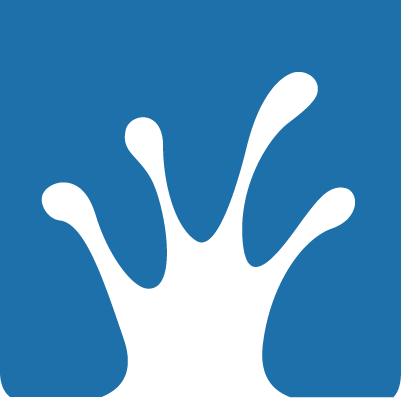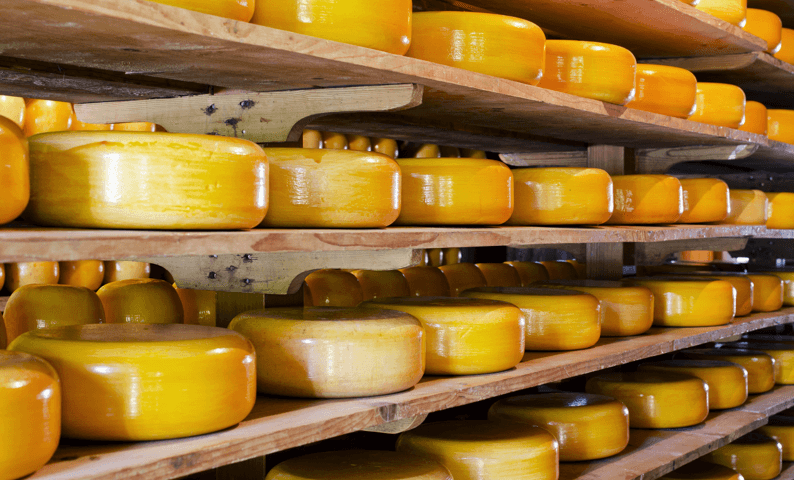

Facts & Figures
An up-to-date overview of the Dutch Dairy sector international and national.
Read moreGeneral
-
Dutch Dairy at a Glance | Brochure
The brochure ‘Dutch Dairy at a Glance’ is an overview of the developments on the (inter)national dairy market.
-
Dutch Dairy - A Collective Effort | Video
The video 'Dutch Dairy - A Collective Effort' is about the strength of the Dutch dairy sector and that we can be proud of this. It is therefore important that in the future the dairy sector will remain a strong sector.
-
The Netherlands: Land of Dairy | Poster
Against the background of an illustrative map of the Netherlands and a Dutch cow, the poster ‘The Netherlands: Land of Dairy’ underlines the relevance of the Dutch dairy sector to the national economy, by showing several key figures. Clear illustrations tell how much milk Dutch cows produce, which products are being made from it and which are the main export destinations.
-
Proud of dairy | Brochure
What do the Dutch think of dairy? In the field of culture, healthy & nutritious, economy and sustainable.
-
The value of dairy | Video
Dairy is a source of valuable nutrients such as protein, calcium and vitamin B12. Dairy fits into a varied, balanced diet and a healthy lifestyle. But did you know that dairy has a lot of other great values besides nutritional value?
Sustainability
-
Animal Health Monitoring | Factsheet
Dairy farmers can only supply milk from healthy cows. In the factsheet 'Animal Health Monitoring’ it is explained that farmers are obligated to monitor the health and wellbeing of the cows. It discusses the three systems of monitoring in the Netherlands that have been developed, based on European law and criteria determined by the dairy sector.
-
Antibiotics | Factsheet
The basis for dairy products is safe milk from healthy cows. Dairy farmers use antibiotics with great care, meaning it is used only within the rules and regulations of a farm treatment plan and the prescriptions of a veterinarian. This is explained in the factsheet 'Antibiotics'.
-
Climate-Sensible Dairy Sector | Report
The Dutch Dairy Association (NZO) and the Dutch Federation of Agriculture and Horticulture (LTO) take their responsibility in reducing greenhouse gases by 2030. That's why they introduced the report 'Climate-Sensible Dairy Sector in the Netherlands'. The plan builds on earlier initiatives in making the dairy chain more sustainable.
-
Grazing | Factsheet
Retaining the level of cows that graze is important for the dairy industry. Also it is a characteristic of the traditional Dutch countryside held dear by the Dutch and known all over the world as a typical Dutch trademark. On top of that, grazing contributes to the natural grazing behaviour of the cow. The factsheet 'Grazing' is about what grazing entails and what initiatives have been set up to encourage grazing.
-
Healthy Dairy Chain | Infographic
Every day Dutch dairy farmers and dairy companies provide healthy and sustainable dairy products. The ‘Healthy dairy chain’ infographic explains what is being done to get the best quality dairy.
Sustainability
-
Housing | Factsheet
When Dutch cows are not grazing, they reside in a stable. The factsheet 'Housing' explaines that sufficient light, air and space, combined with proper hygiene, are important for the health and wellbeing of the cow. This is all incorporated in the stable design and as such much care is taken for the cow's comfort.
-
Relation Veterinarian | Factsheet
Dairy farmer and veterinarian closely work together to continually improve animal health and wellbeing on the farm. This is explained in the factsheet ‘Relation Veterinarian’.
-
Responsible Soy | Factsheet
In the factsheet ‘Responsible Soy’ from our partner Duurzame Zuivelketen we explain how the Dutch dairy chain has made the use of soy in cattle feed sustainable. Since 2015, the Dutch dairy sector has exclusively used soy certified as 100% responsible in Dutch dairy cow feed, which means soy grown without causing deforestation.
-
Sustainable Dairy in Europe 2021 - Safeguarding our Resources | Report
The report 'Sustainable dairy in Europe 2021 - Safeguarding our Resources' is produced as part of a three-year campaign ‘Sustainable Dairy in Europe’, launched by the European Milk Forum, co-financed by the EU Commission. The purpose of the programme is to discuss the challenges of sustainability and climate change and the determination of the dairy sector to be part of the solution.
-
Sustainable Dairy in Europe 2020 - Safeguarding our Resources | Report
Sustainability and climate impact represents some of the biggest challenges for humankind in the 21st century. The report 'Sustainable dairy in Europe 2020 - Safeguarding our Resources' is produced as part of a three-year campaign ‘Sustainable Dairy in Europe’, launched by the European Milk Forum, co-financed by the EU Commission. The purpose of the programme is to discuss the challenges of sustainability and climate change and the determination of the dairy sector to be part of the solution.
-
What Does a Cow Eat? | Infographic
What exactly does a cow eat the whole day? Grass, soy, and corn, and how much of it? This is shown in the infographic ‘What does a cow eat?'. The main answer: a cow eats a lot!
Nutrition
-
Decreasing the Environmental Footprint of Our Diet | Document
Following a healthy and sustainable diet is not as easy as it might seem. The principle of eating less animal-based products and more plant-based products does not, by definition, impact the environment any less. The document 'Decreasing the Environmental Footprint of Our Diet' uses calculations from the Optimeal® tool to identify sustainability principles for our diets that actually do make a difference.
-
Impact of Dairy Substition | Brochure
To guarantee adequate food supply in the future, our food must be sustainable and healthy. Whether a product meets these conditions depends on its environmental impact and nutritional value. In the brochure 'Environmental impact of Dairy substitution', the effects of replacing dairy products are discussed. Using the Optimeal® program, it has been demonstrated that there is hardly any environmental benefit to be gained from replacing dairy in the diet of adult Dutch men and women.
-
The Food Matrix: Food is More Than the Sum of Its Nutrients | Document
The document 'The Food Matrix: Food is More Than the Sum of Its Nutrients' provides the latest scientific insights regarding the matrix of milk, yoghurt and cheese. These food products as a whole are more than the sum of its nutrients.
Quality
-
Monitoring | Factsheet
Dairy companies take animal health and wellbeing very seriously. That’s why every dairy farm is monitored for this. The factsheet ‘Monitoring’ shows what dairy farmers do to take care for the health and welfare of their cows.
-
Quality Guaranteed | Brochure
Dutch dairy companies are part of a unique quality infrastructure: intensive cooperation and independent monitoring prevents accidents and guarantees quality. This is described in the brochure ‘Quality Guaranteed’.
-
Quality System in the Dutch Dairy Chain | Video
How do farmers and dairy companies manage to maintain high quality dairy products, and guarantee food safety? We’ll show you in this video about Quality system in the Dutch Dairy Chain.
Market
-
Circulair Economy | Brochure
The brochure 'Circular Economy' illustrates the many key elements of the circular economy already found in the dairy sector.
-
Dutch Dairy Export | Infographic
This is an interactive world map with the export figures for Dutch dairy. You will find the market share, volume in kg and value in euros. Click on or type a country to view the figures per country.
-
The Power of Dairy | Report
The report ‘The Power of Dairy’ is about the economic and social relevance of the dairy sector. It shows that the Dutch dairy sector is of great importance to the Dutch economy, can contribute to global food security, is among the world leaders when it comes to innovation and keeps working to be more and more sustainable.
